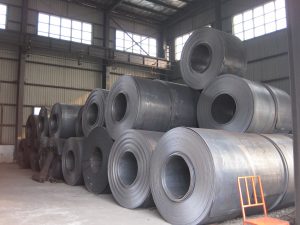Application of hydrogen in steel industry
Around 2008, the blast furnaces of many steel pipe company also carried out coke oven gas injection tests. In 1973, the Institute of Chemical Metallurgy, Chinese Academy of Sciences successively built tonnage test facilities in Cangzhou, Hebei and Zaozhuang, Shandong to carry out semi-industrial experiments on hydrogen fluidization reduction of Panzhihua vanadium-titanomagnetite. In 1975, a 5 ton/day sponge iron test device for water gas shaft furnace was built in Shaoguan, Guangdong Province. In 1979, 5 cubic meters gas-based shaft furnace was built in Panzhihua to carry out the experiment of reducing vanadium titanomagnetite with natural gas. In 2006, Baosteel, Iron and Steel Research Institute and Shanghai University jointly undertook the research and development project of the new hydrogen metallurgy melting reduction process. In recent years, Zhongjin Taihang, Hesteel and Baosteel set up hydrogen-based shaft furnace hydrogen metallurgy production lines, with the capacity of 300,000 tons/year ~ 1.2 million tons/year.

The application of hydrogen in rectangular hollow section mainly includes hydrogen rich reduction blast furnace, hydrogen metallurgy gas base shaft furnace, hydrogen metallurgy melting reduction process. Among them, the technology of hydrogen-rich reduction blast furnaces is relatively mature, and some of them have been applied in industrialization, with carbon emission reduction capacity of 10%-20%. The carbon emission reduction capacity of hydrogen metallurgical shaft furnace direct reduction process can reach 50%~98%, which is the current key research and development direction. The smelting reduction of hydrogen metallurgy is mostly in the laboratory research stage, and the industrialization is not yet mature.
Hydrogen-rich reduction blast furnace refers to pure hydrogen/hydrogen-rich reduction gas instead of coal or coke, which is sprayed into the blast furnace through the air outlet to increase the hydrogen content of the gas in the furnace, strengthen the participation of hydrogen in indirect reduction in the upper part of the furnace, reduce CO2 emissions, and achieve low-carbon iron making. The injection of coke oven gas from blast furnaces in COURSE50, Japan, aims to reduce CO2 emissions from the Japanese steel industry by 30 per cent by 2050, from 1.64 tons to 1.15 tons per tons of black steel pipe. Thyssenkrupp tkH2Steel in Germany uses hydrogen instead of coal as reducing agent to reduce the carbon emissions from blast furnace ironmaking, and the carbon emission reduction is expected to reach 20%. South Korea is expected to invest 4.8 trillion won from the research and development of hydrogen reduction iron technology to the practical application of 12 blast furnaces to achieve a carbon emission reduction of 8.7 percent. China Baowu Nuclear Energy Hydrogen production and hydrogen energy Metallurgy has built a 600,000-kilowatt high temperature gas cooled reactor unit, which can meet the demand of hydrogen, electricity and part of oxygen for 1.8 million tons of steel production, reduce the annual emission of 3 million tons of CO2, and reduce the energy consumption of 1 million tons of standard coal. In general, the injection of hydrogen into blast furnaces relies on large-scale low-cost hydrogen production technology and efficient and safe hydrogen storage and transportation technology, which are still under development of Hot Rolled Round Steel Pipe. The natural gas resources in China are relatively lacking and the price is expensive, so the blast furnace spraying natural gas needs to be considered economically. Coke oven gas is relatively surplus, the price is relatively low.
Tel: +86 18202256900 Email: steel@tjdpbd.com
Previous: Avoid market risks









